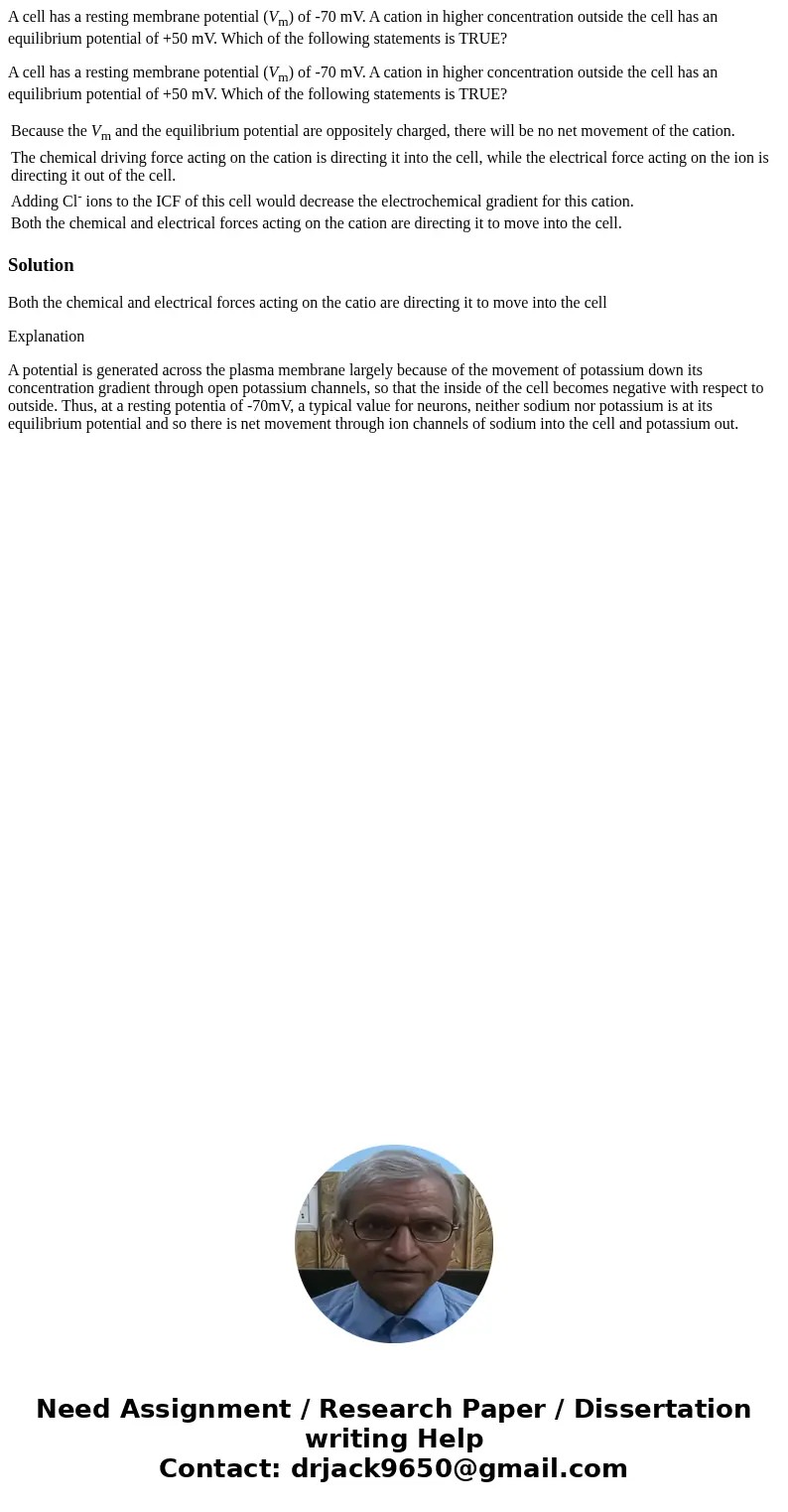A cell has a resting membrane potential Vm of 70 mV A cation
A cell has a resting membrane potential (Vm) of -70 mV. A cation in higher concentration outside the cell has an equilibrium potential of +50 mV. Which of the following statements is TRUE?
A cell has a resting membrane potential (Vm) of -70 mV. A cation in higher concentration outside the cell has an equilibrium potential of +50 mV. Which of the following statements is TRUE?
| Because the Vm and the equilibrium potential are oppositely charged, there will be no net movement of the cation. |
| The chemical driving force acting on the cation is directing it into the cell, while the electrical force acting on the ion is directing it out of the cell. |
| Adding Cl- ions to the ICF of this cell would decrease the electrochemical gradient for this cation. |
| Both the chemical and electrical forces acting on the cation are directing it to move into the cell. |
Solution
Both the chemical and electrical forces acting on the catio are directing it to move into the cell
Explanation
A potential is generated across the plasma membrane largely because of the movement of potassium down its concentration gradient through open potassium channels, so that the inside of the cell becomes negative with respect to outside. Thus, at a resting potentia of -70mV, a typical value for neurons, neither sodium nor potassium is at its equilibrium potential and so there is net movement through ion channels of sodium into the cell and potassium out.

 Homework Sourse
Homework Sourse